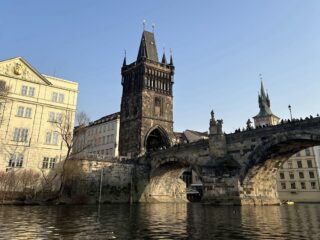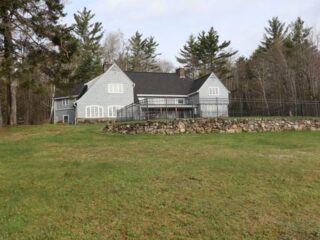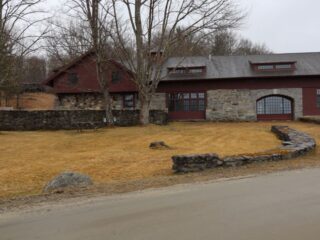by Jennifer Ciotta
Unfortunately, I could not travel to France this spring so I decided to bring the country to me in New York City. I discovered that the Francophone, French-speaking, community in the city seems to be quite substantial and love of French culture exists amongst New Yorkers, but prefers quiet recognition. Thus I went to the source: French Institute Alliance Francaise (FIAF). My thoughts veered off to Les Miserables’ Victor Hugo, ex-pat Parisian poet Gertrude Stein, and of course, Francophone writer Samuel Beckett. Yet the vastness and contemporary interior design of FIAF led me to believe that I would gain extensive knowledge of the present-day scene. As my tour guide, Mark Rizzo, Communications and Marketing Director, eloquently stated, “The French enjoy the moment a little more than we do.” This I was prepared to see.
Founded in 1911, FIAF dedicated itself to bring the French culture and arts to New York City. Although branches of Alliance Francaise inhabit many cities all over the United States, each one runs autonomously. Stemming from various cultural activities such as literary speakers to a children’s film series, events are provided for members and non-members of the Institute.
Perhaps the most exciting literary occasion occurred in March 2007 as FIAF welcomed Nobel-prize winning author Toni Morrison, who opened a four-day festival entitled Art is Otherwise. Morrison spoke of her time at the Louvre Museum, where she curated an artistic series. Additionally, iconic French actress Fanny Ardant is set to take the theater stage in May of this year. It is Ardant’s New York stage debut, in which she plays a prostitute conversing with a male client who cannot acquire love. The one-woman performance is an adaptation of French literary great Marguerite Duras’ short story La maladie de la Mort, which is already receiving amazing reviews in France, according to Lili Chopra, Vice President of Cultural Affairs.
Besides performances, traditional French activities are held at FIAF, in particular a wine tasting series and speakers who prepare culinary delights. These events can be located in Le Skyroom, on the eighth floor. Carpeted in a brilliant multi-colored rug and bathed in deep blue walls, Le Skyroom stylishly beautifies special events. Skylight windows keep out the New York sounds, while allowing an upbeat presence. A modern kitchen, tucked in the corner of Le Skyroom, remains open for a wine tasting series, which includes instruction by a sommelier and samples from the Loire Valley and Bordeaux. Although movies are occasionally viewed on a drop down screen, two theaters hold audience members for the widely popular “Cinema Tuesdays,” which has featured a Marguerite Duras series, and in the future, a series dedicated to French legend Rene Clair.
However, I was on the hunt for another literary source: French books. Onto the Haskell Library I went. Renovated in 1998, the Library was the vision of outstanding architect Michael Graves, recipient of the 1999 National Medal of the Arts and 2000 Gold Medal of the American Institute of Architects. Taking on the project, Graves asked Vice President of Haskell Library Katharine Branning, “What do you want to say in this library? Let me help you say it.” Emphatic about “a processional to French culture,” Graves constructed a lovely entryway with columns and an open ceiling.
As Branning recalls, upon the opening of the newly-renovated Library, one member observed, “This is wonderful. I feel like somebody.” In agreement with this person, the library does command regality and European excellence, yet in comparison to the New York Public Library at Bryant Park, it is relatively petit. Knowing this fact, the Library only contains books relating to or about French culture; in fact, 98% of the reading material is in the French language making it the largest library of French books in the United States. Beyond the cultural stateliness, perhaps it is the delightful touches, which make the Library seem light-hearted and creative, all at once. The glowing red tables situated in the center of the study room insert “a great spin of energy,” according to Branning, while the children’s area is filled with Barbar, Caillou and even the adorable Madeline.
When I inquired if the French literary community has a strong presence in New York, my thoughts were confirmed. The French arts, especially cinema, compel New Yorkers, however, interest in literature is becoming more ubiquitous, since Francophone writers are carrying the French literary movement of today. For example, guest speaking at FIAF in late April 2007 is Yasmina Khadra, an Algerian-born author whose novel The Swallows of Kabul, was given the distinguished honor of “Best Book of 2005” by The San Francisco Chronicle and The Christian Science Monitor. Another rising literary contemporary is Michel Houellebecq, France’s most controversial writer due to his candid statements, is said to have the ability to write about the darkness of the world with the deepest perception, yet, he has not made an appearance at FIAF.
Perhaps one of the most endearing moments at FIAF was when Plantu, a political cartoonist for the French newspaper Le Monde, presented his work in the Haskell Library. Vibrant, yet shy, he could barely speak English. Out of his mouth, he uttered in his broken English, “I show.” He simply drew picture after picture thus explaining himself through his art, and in true French fashion, impressing his American audience with little words and humble talent.








